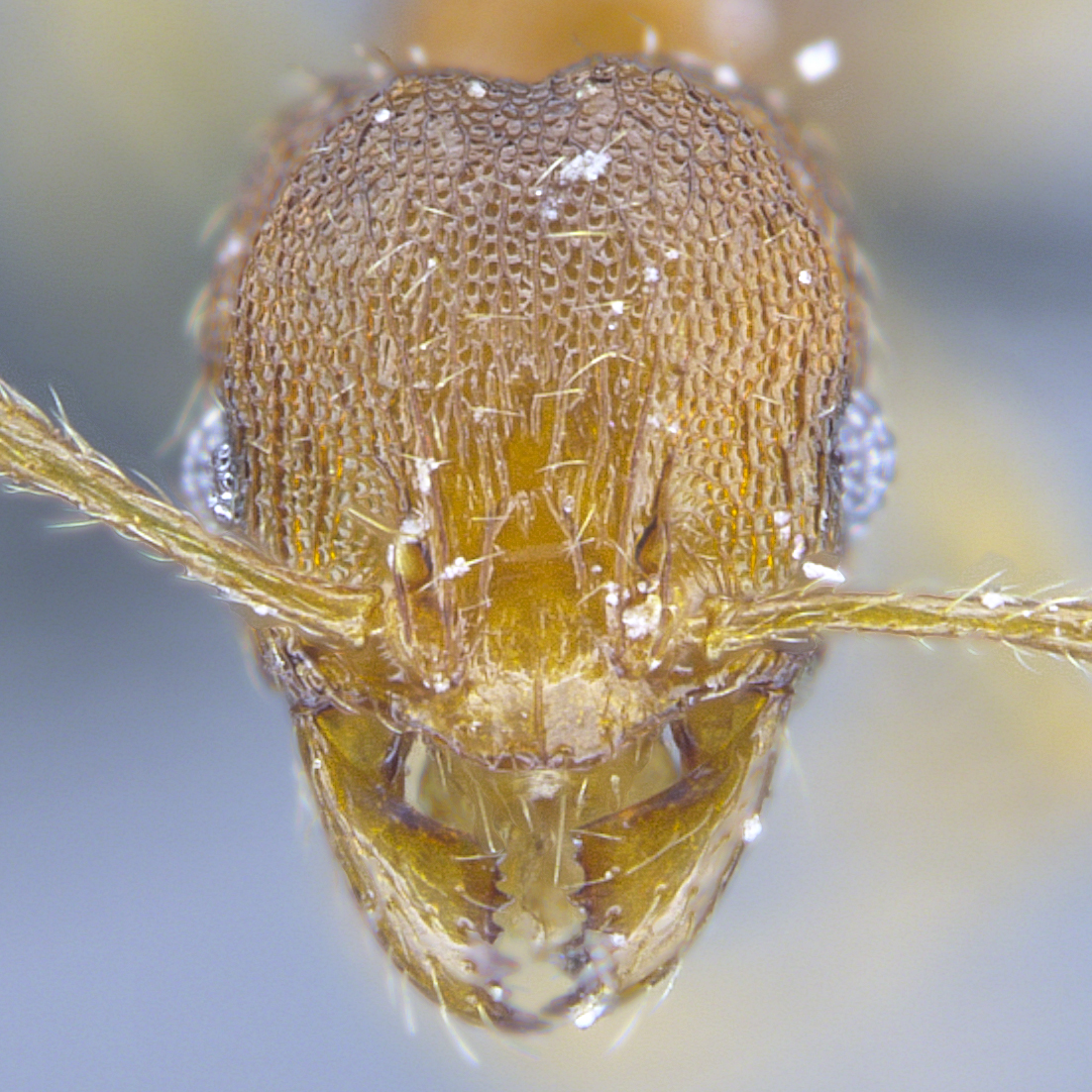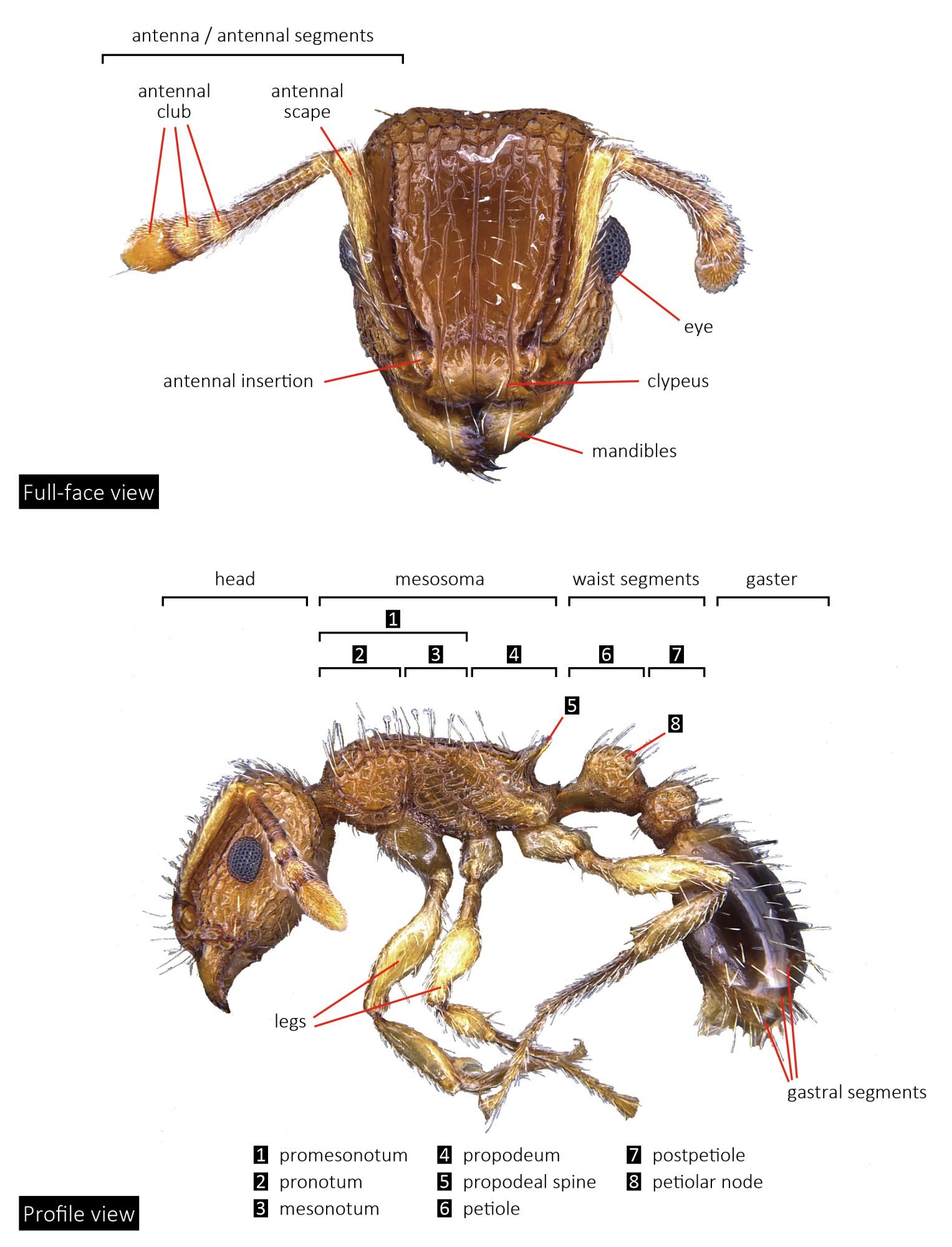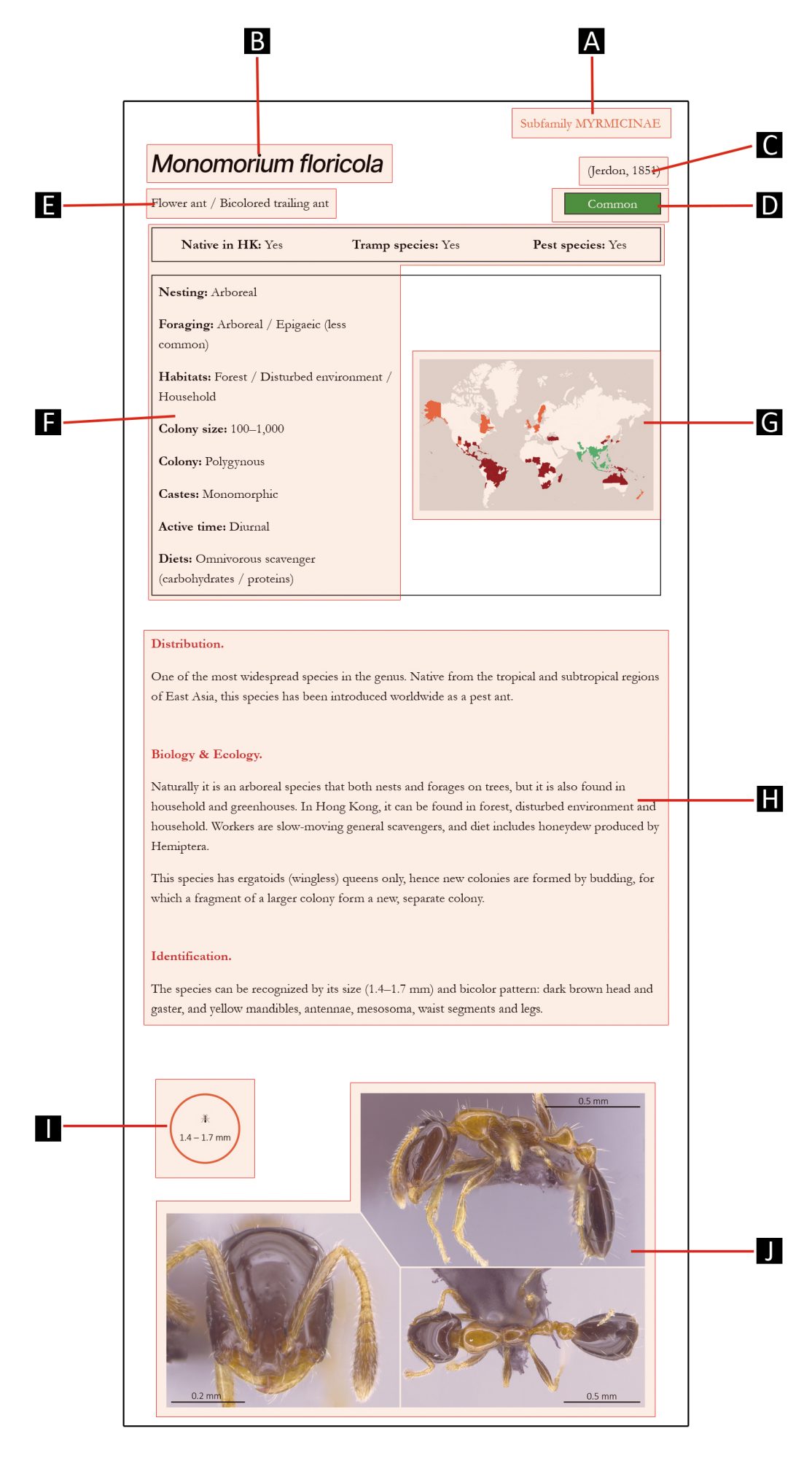
Subfamily MYRMICINAE
GENUS
Pheidole
Westwood, 1839
Big-headed ants
Distribution.
A very successful ant genus with 1176 species described. This genus is currently the most species-rich genus of ants. The genus has a cosmopolitan distribution and can be found on all continents. Some species are known tramp ants.
Biology & Ecology.
Pheidole species have highly diverse lifestyle, nests are usually located within the soil, but some species are considered arboreal. Nests range from small to large, contain just a few dozen of workers to tens of thousands of workers.
Pheidole species are mostly general scavengers, and are attracted to lipid-rich food. Workers are mostly dimorphic, meaning that there are two distinct worker castes, major workers (soldier) and minor workers but no intermediate caste.
Identification.
Pheidole species are small to medium in size (2–6 mm), mostly with brown to dark brown coloration, but there is a huge diversity of other colors as well. They can be recognized by their 12-segmented (less frequently 11- or 10-segmented) antennae, well-developed eyes, and, for minor workers, the anterior portion of their mesosoma (promesonotum) strongly raised as a dome; propodeal spines are also often present.

Species in this genus




